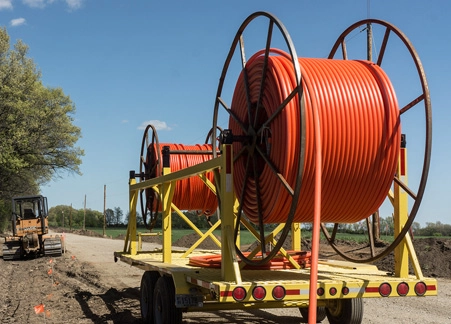
-
 Afrikaans
Afrikaans -
 Albanian
Albanian -
 Amharic
Amharic -
 Arabic
Arabic -
 Armenian
Armenian -
 Azerbaijani
Azerbaijani -
 Basque
Basque -
 Belarusian
Belarusian -
 Bengali
Bengali -
 Bosnian
Bosnian -
 Bulgarian
Bulgarian -
 Catalan
Catalan -
 Cebuano
Cebuano -
 Corsican
Corsican -
 Croatian
Croatian -
 Czech
Czech -
 Danish
Danish -
 Dutch
Dutch -
 English
English -
 Esperanto
Esperanto -
 Estonian
Estonian -
 Finnish
Finnish -
 French
French -
 Frisian
Frisian -
 Galician
Galician -
 Georgian
Georgian -
 German
German -
 Greek
Greek -
 Gujarati
Gujarati -
 Haitian Creole
Haitian Creole -
 hausa
hausa -
 hawaiian
hawaiian -
 Hebrew
Hebrew -
 Hindi
Hindi -
 Miao
Miao -
 Hungarian
Hungarian -
 Icelandic
Icelandic -
 igbo
igbo -
 Indonesian
Indonesian -
 irish
irish -
 Italian
Italian -
 Japanese
Japanese -
 Javanese
Javanese -
 Kannada
Kannada -
 kazakh
kazakh -
 Khmer
Khmer -
 Rwandese
Rwandese -
 Korean
Korean -
 Kurdish
Kurdish -
 Kyrgyz
Kyrgyz -
 Lao
Lao -
 Latin
Latin -
 Latvian
Latvian -
 Lithuanian
Lithuanian -
 Luxembourgish
Luxembourgish -
 Macedonian
Macedonian -
 Malgashi
Malgashi -
 Malay
Malay -
 Malayalam
Malayalam -
 Maltese
Maltese -
 Maori
Maori -
 Marathi
Marathi -
 Mongolian
Mongolian -
 Myanmar
Myanmar -
 Nepali
Nepali -
 Norwegian
Norwegian -
 Norwegian
Norwegian -
 Occitan
Occitan -
 Pashto
Pashto -
 Persian
Persian -
 Polish
Polish -
 Portuguese
Portuguese -
 Punjabi
Punjabi -
 Romanian
Romanian -
 Russian
Russian -
 Samoan
Samoan -
 Scottish Gaelic
Scottish Gaelic -
 Serbian
Serbian -
 Sesotho
Sesotho -
 Shona
Shona -
 Sindhi
Sindhi -
 Sinhala
Sinhala -
 Slovak
Slovak -
 Slovenian
Slovenian -
 Somali
Somali -
 Spanish
Spanish -
 Sundanese
Sundanese -
 Swahili
Swahili -
 Swedish
Swedish -
 Tagalog
Tagalog -
 Tajik
Tajik -
 Tamil
Tamil -
 Tatar
Tatar -
 Telugu
Telugu -
 Thai
Thai -
 Turkish
Turkish -
 Turkmen
Turkmen -
 Ukrainian
Ukrainian -
 Urdu
Urdu -
 Uighur
Uighur -
 Uzbek
Uzbek -
 Vietnamese
Vietnamese -
 Welsh
Welsh -
 Bantu
Bantu -
 Yiddish
Yiddish -
 Yoruba
Yoruba -
 Zulu
Zulu


Aug . 14, 2024 18:52 Back to list
Effective Grounding Solutions for Above Ground Pools to Ensure Safety and Compliance
Grounding Rod for Above-Ground Pools Ensuring Safety and Compliance
When it comes to enjoying your above-ground pool, safety should always be a top priority. One essential aspect of pool safety is ensuring proper grounding and bonding, particularly if you live in an area prone to electrical storms or if your pool equipment is powered by electricity. A grounding rod serves as a critical component in this safety measure, helping to protect both users and equipment from electrical surges and potential hazards.
What is a Grounding Rod?
A grounding rod is a metal rod, often made of copper or galvanized steel, that is driven into the ground and connected to your electrical system. Its primary purpose is to provide a path for electrical excess, such as from lightning strikes or surges, to safely dissipate into the earth. This is crucial for above-ground pools as they often involve metal structures, which can become conductive in the event of an electrical fault.
Why Do You Need a Grounding Rod for Your Above-Ground Pool?
1. Safety from Electrocution Above-ground pools often have electrical equipment, such as pumps, heaters, and lighting. If there is a fault in any of these devices, it can lead to dangerous electric shocks. A grounding rod diverts excess electricity safely into the ground, significantly lowering the risk of electrocution for swimmers and bystanders.
2. Protection of Equipment Surges in electricity can harm electronic devices. A grounding rod can help protect your pool’s electrical components, extending their lifespan and reducing maintenance costs over time.
3. Compliance with Local Codes Many local electrical codes mandate the bonding and grounding of above-ground pools. Failing to install a grounding rod could lead to legal issues, especially if there were to be an incident. Ensuring that your pool meets these codes not only enhances safety but also maintains property value.
grounding rod for above ground pool

How to Install a Grounding Rod
1. Select the Right Material Grounding rods are typically made from copper or galvanized steel, with a diameter of at least 1/2 inch. Select a rod that meets your local electrical codes.
2. Choose the Location The grounding rod should be installed in a location that allows for easy connection to your electrical panel. Ensure it is also driven deep enough into the ground to provide effective grounding.
3. Installation Depth The National Electrical Code (NEC) typically requires grounding rods to be at least 8 feet long, though local codes may vary. Drive the rod into the ground until only about 6 inches are left above the surface.
4. Connecting the Ground Wire Use a copper or aluminum grounding wire to connect the grounding rod to the pool’s electrical system. The wire should be securely fastened to both the rod and the equipment, ensuring a low-resistance path for any stray electricity.
5. Check Local Regulations Always check local building codes and regulations regarding grounding and bonding for above-ground pools. It may be necessary to have a licensed electrician perform the installation to ensure compliance.
Conclusion
Installing a grounding rod for your above-ground pool is not just an added safety feature; it is a necessary precaution that can save lives, protect your investment, and keep you compliant with local regulations. The small effort put into ensuring proper grounding can provide peace of mind and allow you to enjoy your pool safely. Remember, safety is everyone's responsibility, and taking the necessary steps to ground your pool can prevent accidents and injuries, making your summer days by the pool worry-free. Always consult with professionals when in doubt, and prioritize your safety and the safety of others above all.
Latest news
The Unique Design of Cable Socks
NewsJun.04,2025
Swivel Connectors in Industrial Automation
NewsJun.04,2025
Safety Features of Link Sticks
NewsJun.04,2025
How to choose the best cable pulling winch for sale
NewsJun.04,2025
Fish tape safety precautions
NewsJun.04,2025
Essential Maintenance Tips for Cable Pulling Tools
NewsJun.04,2025











